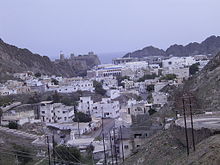.mw-parser-output .hidden-begin{box-sizing:border-box;width:100%;padding:5px;border:none;font-size:95%}.mw-parser-output .hidden-title{font-weight:bold;line-height:1.6;text-align:left}.mw-parser-output .hidden-content{text-align:left}You can help expand this article with text translated from the corresponding article in Portuguese. (December 2015) Click [show] for important translation instructions.
View a machine-translated version of the Portuguese article.
Machine translation, like DeepL or Google Translate, is a useful starting point for translations, but translators must revise errors as necessary and confirm that the translation is accurate, rather than simply copy-pasting machine-translated text into the English Wikipedia.
Consider adding a topic to this template: there are already 1,500 articles in the main category, and specifying|topic= will aid in categorization.
Do not translate text that appears unreliable or low-quality. If possible, verify the text with references provided in the foreign-language article.
You must provide copyright attribution in the edit summary accompanying your translation by providing an interlanguage link to the source of your translation. A model attribution edit summary is Content in this edit is translated from the existing Portuguese Wikipedia article at [[:pt:Forte de Al-Mirani]]; see its history for attribution.
You should also add the template ((Translated|pt|Forte de Al-Mirani)) to the talk page.
For more guidance, see Wikipedia:Translation.
| Fort Al-Mirani | |
|---|---|
| Muscat, Oman | |
 Fort Al-Mirani (background left) | |
| Site history | |
| Materials | Stone |


Fort Al-Mirani (Arabic: قلعة الميراني) is a fort located in the harbor of the city of Old Muscat, Oman. The fort existed prior to the Portuguese invasion and was later rebuilt by the Portuguese in 1587. The fort became the first to use cannons in Oman.[1]